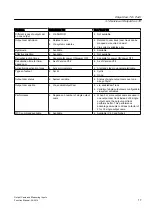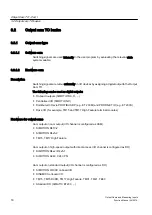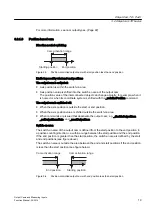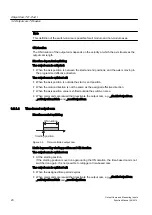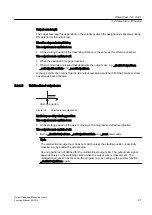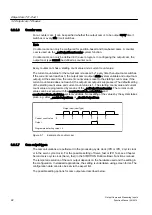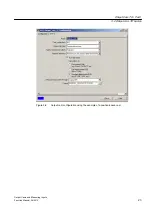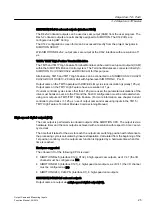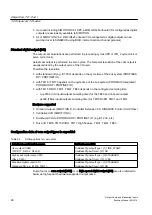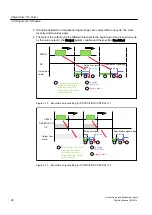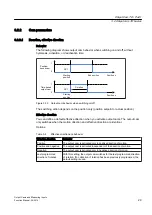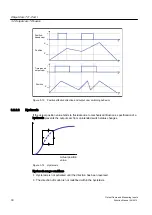
● Reference to the actual value on the encoder without considering Ti. Reference to the actual
position in the controller before the position filter.
● Reference to the actual value after the position filter. Reference to the actual position in the
controller after the position filter.
● Reference to the actual value on the encoder. Ti is taken into account. Reference to the
actual value on the encoder module / drive. The transmission time Ti from the encoder
module / drive to the controller is taken into account by the system.
Possible configuration of the cams with setpoint reference:
● Reference to the setpoint after the fine interpolator. The cam switch points are calculated
as if the setpoints will already have been reached at the end of this IPO cycle, e.g. if a
setpoint is calculated for the IPO cycle clock with the virtual axis and also displayed at the
end of the cycle. Reference is made directly to the setpoint applicable at the end of the
cycle.
● Reference to the setpoint after the fine interpolator. The cam switch points are calculated
as if the setpoint calculated in the interpolator will be output completely in the following
cycle and the calculated position setpoint will therefore be reached at the end of the
following cycle.
● Reference to the setpoint on the drive. Calculation of the cam switch points according to
the setpoint output with the current settings on the drive.
In this case, the output cam functionality can be applied to axes or external encoders with or
without modulo properties.
The output cam is also effective for axes that have not been homed.
The Output Cam technology object is assigned to exactly one output during configuration.
Output can be achieved via:
● Onboard I/O
● Drive I/O (e.g. TB30, TM31, TM1x)
● SIMOTION C centralized I/O
● Distributed I/O; PROFIBUS DP I/O (e.g. ET 200M)
However, the output must not be in the process image.
The switching accuracy is dependent on the following:
● Output accuracy of the I/O
● How the output cam is allocated in the task system
● How constant delay times are compensated
Several Output Cam TOs can be connected to the same output (see Chapter Logical
operation). Alternatively, the Cam Track TO can be used for this purpose.
Example
Lines of glue are applied to a wooden board. The output cams are assigned to an external
encoder. Output cams assigned to outputs Q 0 to Q 4 are switched on and off at specified
positions.
Output Cam TO - Part I
3.1 Overview of Output Cam TO
Output Cams and Measuring Inputs
Function Manual, 04/2014
15

















